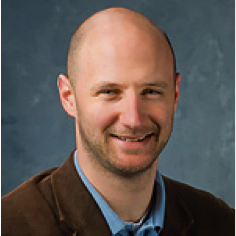Shifts in the understanding of systems and organizations are essential in helping to form the next iteration of church collaboration.
In previous posts, I have been writing extensively about the history of church and cultural systems/organizations, as well as the very relevance of various shifts therein. In this post I shall explore new developments in the understanding of systems as influenced by shifts in the sciences.
One of the many changes that have emerged in this time of transition is a new understanding of science. Emerging theories are identified by a variety of names (complexity theory, chaos theory, living systems theory, to name a few), but they all share the similar belief: The universe is not rigidly ordered and, therefore, cannot be understood as ordered by science.
This is a shift from a mechanistic worldview to an organic and connected worldview (Pascale, Millemann, Gioja, Surfing the Edge of Chaos: The Laws of Nature and the New Laws of Business). The description of this shift that most clearly aligns with the organizational changes taking place in society is the living systems theory or, as it is sometimes called, adaptive systems.
the universe is not rigidly ordered and, therefore, cannot be understood as ordered by science
Tweet this.
The development of this theory came as researchers in the area of life science discovered repetitive patterns of behavior that were simple on a basic level, but, as various components of these simple systems interacted following simple rules, an enormously complex structure began to emerge. These systems are self-organizing and change and emerge into new forms as their environmental factors require them (Wheatley, Finding Our Way: Leadership for an Uncertain Time).
Five Principles of Living Systems
There are five basic summative principles that undergird the theory of living systems. Various scholars rank these in different order, but nonetheless they all appear in each of their basic taxonomies.
Movement: Living systems are alive; they are changing all the time because equilibrium would be a precursor to death. Many organizational theorists have suggested that organizations must de-stabilize themselves from time to time in order for change and innovation to take place (Kotter, Leading Change). In addition, movement happens within a living system in the area of reproduction or multiplication.
Chaos: Living systems move towards chaos in moments of crisis or opportunity. Indeed, a certain level of crisis and disruption is necessary for living systems to emerge, and it is the environment they are in which provides them this destabilization. These changes are brought about, specifically, as the result of new information (whether positive or negative). When this occurs, the system grows, and new knowledge is attained. In this process, Pascale believes that feedback mechanisms are essential as they enable the organization to continue moving towards growth (Pascale, Millemann, Gioja).
Self-organization: Living systems have the ability to reconnect after their disruption, forming new relationships and new possibilities. These tend to occur around a shared interest or a common need. New patterns are established within the systems until the next state of disequilibrium. In other words, systems contain their own solutions (Wheatley). Margaret Wheatley in another work, Leadership and the New Science, says, “When leaders strive for equilibrium and stability by imposing control, constricting people’s freedom and inhibiting local change, they only create the conditions that threaten the organization’s survival.
Unpredictability: Because the system is alive, it cannot be controlled, and the patterns that will emerge after change is introduced cannot be certain. Some suggest that disequilibrium can even be introduced into a system in a calculated way that may result in an approximate outcome. However, it is posited that this may relate to the stability that comes from a living system or organization finding a “deepening center,” or a greater clarity about which they are to be.
Connectedness: Ultimately living systems develop because of the interconnectedness of the various parts of the systems. It is not a hierarchical structure of interconnectedness, but a decentralized network structure (Brafman, Beckstrom, The Starfish and the Spider: The Unstoppable Power of Leaderless Organizations). Very often, smaller sub-systems come together and then relate to other smaller sub-systems. Even parts of systems that start off distant from each other within a macro-system can easily move towards connection through a series of mutual relationships (Mark Buchanan, Nexus: Small Worlds and the Groundbreaking Theory of Networks). Some even suggest that the weak ties in a network structure may produce the most effective results in a given situation (Barabasi, Linked: How Everything Is Connected to Everything Else and What It Means for Business, Science, and Everyday Life).
a certain level of crisis and disruption is necessary for living systems to emerge
Tweet this.
Living systems theory is changing the way that issues in a variety of disciplines are being considered. From the perspective of organizational theory, it is lending credence to the necessary changes that organizations need to make in this postmodern situation. Indeed, the rate of change that is being experienced globally and the interconnectedness of all those changes often means that varying organizational structures are needed to maintain some level of progress in organizations.
Living systems theory is changing the way issues in a variety of disciplines are being considered
Tweet this.
Wheatley goes even further to add that, in order to maintain consistency with itself and its history, an organization must be constantly evolving. Thus, the identity, or sense-making capacity of the organization becomes all the more critical (Roozen, Nieman, eds. Church, Identity, and Change).
In addition to identity, Wheatley adds that the information coming into the organization and shared among it and the relationships of the organization are the central elements to operating a fluid and adaptive organization. The information changes the environment and de-stabilizes the system, which in turn creates room for growth. The relationships, which are the pathways that connect the various parts of the system together, carry the information from one part of the system to another.
Contemplating these things, how ought we embrace living systems theory in relation to denominations, church structures, and, particularly, fresh expressions of the church?


